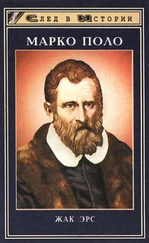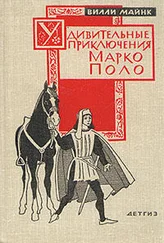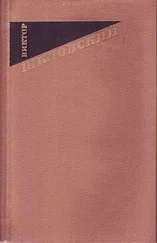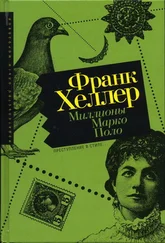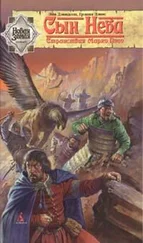Вопрос о картах является самым спорным для всех исследователей Поло. Возможно, Марко намеревался включить в свое повествование маршруты, предназначенные для купцов, но они были утеряны, или Рустичелло, будучи скорее романистом, чем географом, решил исключить их. Порой всплывали карты, якобы составленные Марко Поло, однако их подлинность сомнительна. Обзор этой темы см. у Лео Багроу в труде «Карты из домашнего архива потомков друга Марко Поло». Следует отметить, что карты, о которых говорит Багроу, это современные копии более старых карт. Возможно, что карты, приписываемые Марко Поло, — изощренный научный розыгрыш.
Иоганна Руиша цитирует Харт в книге «Марко Поло». См. также «Открытие морей» Дж. Н. Парри в первом калифорнийском издании.
Лучшее на английском языке обсуждение вопроса о Великой Стене в связи с отчетом Марко Поло можно найти у Артура Н. Уолдрона в «Проблеме Великой Китайской Стены».
Краткое обсуждение дискуссии о подлинности путешествий Марко, начатой Френсисом Вудом, см. в «Шелковом пути» Люка Боулнойса. Игор де Рачевилц дает убедительную и подробную критику книги Вуда в своей работе ««Бывал ли Марко Поло в Китае» Ф. Вуда». Я благодарю профессора де Рачевилца за приложение с дополнениями и поправками к его книге, где он приводит замечания о китайских картографах.
Тонкую научную дискуссию по поводу того, каким образом сообщение Марко, что он сопровождал в Персию монгольскую принцессу Кокачин, доказывает, что он бывал в Китае и служил Хубилай-хану, см. в работе «Китайские источники, относящиеся к отъезду Марко Поло из Китая, и персидские источники относительно его прибытия в Персию» Френсиса Вудмана Кливса.
Abu-Lughod Janet. Before European Hegemony: The World System A. D. 1250–1350. New York: Oxford University Press, 1989.
Adamec Ludwig W., ed. Historical and Political Gazetteer of Afghanistan. Vol. I. Badakhshan Province and Northeastern Afghanistan. Graz: Akademische Druck- u. Verlagsanstalt, 1972.
Alexander Caroline. The Way to Xanadu. New York: Alfred A. Knopf, 1994.
Allen Mark. Falconry in Arabia. London: Orbis, 1980.
Allulli Ranieri. Marco Polo. TLirin: Paravia, 1924.
Annaligenovesi dopo Caff ото e suoi continuatori. Genoa: Municipio di Genova, 1941.
Ariz Ghulum Jilani. Shah Rabai Afghanistan [King’s Roads of Afghanistan]. Peshawar: Afghanistan Resource and Information Centre (ARIC), 2000.
Avon Caffi Giuseppe. «L’Arte cinese a Venezia». LItalia the scrive, anno 37, no. 10 (October 1954).
Bagrow Leo. «The Maps from the Home Archives of the Descendants of a Friend of Marco Polo». Imago Mundi 5 (1948): 3-13.
Balestrieri Leonida. «Le Prigioni della Malapaga». In Cassa di Risparmio di Genova. Genoa: Marzo-Giugno, 1960.
Balazs Etienne. Chinese Civilization and Bureaucracy: Variations on a Theme. Translated by H. M. Wright. Edited by Arthur E. Wright. New Haven: Yale University Press, 1964.
Bar Hebraeus. The Chronology of Gregory Abu'l Farcy. Translated by E. A. Wallis Budge. London: Oxford University Press, 1932.
Barraclough Geoffrey. The Medieval Papacy. London: Thames & Hudson, 1968.
Barrett Т. H. «Marco Polo Did Go to China, So There». London Review of Books, November 30,1995. P. 28.
Bertuccioli Umberto. «II ritomo via mare di Marco Polo». Giomale economico della Camera di Commercio di Venezia , March 1954. Venezia: Officine Grafiche F. Garzia, 1954.
— «Marco Polo: Uomo di mare». Ateneo Veneto , anno 146, vol. 139, no. I (January — June, 1955): 1-15.
BiraSh. Studies in Mongolian History, Culture, and Historiography. Edited by Ts. Ishdorj and Kh. Purevtogtokh. Ulaanbaatar: International Association for Mongol Studies, 2001.
Boors tin Daniel. The Discoverers. New York: Random House, 1983.
Boulnois Luce. The Silk Road. Translated by Helen Loveday. Hong Kong: Odyssey Books, 2004.
Boyle, John Andrew. «Marco Polo and His Description of the World». History Today 21, no. II (London, 1971): 759–769.
Braunstein E. and R. Delort. Venise; portrait historique d'une cite. Paris: Editions du seuil, 1971.
Bratianu G. I. Recherches sur le commercegenois dans lamerNoire auXlII siecle. Penis: P. Geuther, 1929.
Brice Catherine. Histoirede Vltalie. Paris: Hatier, 1992.
Brown Lloyd A. The Story of Maps. 1949. Reprint, New York: Dover, 1977.
Brunetti Mario. «Venezia al tempo di Marco Polo». LItalia che scrive , anno 37, no. 10 (October 1954).
Buell Paul. «Pleasing the Palate of the Qan». Mongolian Studies 13 (1990): 57–81.
Cable Mildred, French Francesca. The Gobi Desert. New York: Macmillan, 1944.
Calvino Italo. Invisible Cities. Translated by William Weaver. New York: Harcourt, 1974.
The Cambridge History of China. Vol. 6. Alien Regimes and Border States. Edited by Herbert Franke and Denis TWitchett. Cambridge: Cambridge University Press, 1966.
Capusso M. G. La lingua del «Devisament dou monde» di Marco Polo. Pisa: Pacini, 1980.
Carter Thomas Francis. The Invention of Pi~inting in China and Its Spread Westward. New York: Columbia University Press, 1925.
Cary George. The Medieval Alexander. Cambridge: Cambridge University Press, 1966.
Castellani Giuseppi. «I valori delle monete espresse nel testam-nento di Marco Polo». Rivista mensile della Citta di Venezia 3, no. 9 (September 1924): 257–258.
Chamerlat Christian Antoine de. Lafauconnerie et Uart. Courbe-voie, 1986.
Cigni Fabrizio. II romanzo arturiano de Rustchello da Pisa. Pisa: Edizioni Cesso di Risparmio di Pisa, 1994.
Cleaves Francis Woodman. «А Chinese Source Bearing on Marco Polo’s Departure from China and a Persian Source on His Arrival in Persia». Harvard Journal of Asiatic Studies 36 (1976): 181–203.
—. «An Early Mongolian Version of the Alexander Romance». Harvard Journal of Asiatic Studies 22 (December 1959): 1-99.
Collis Maurice. Marco Polo. London: Fkber & Faber, 1950.
Colon Fernando. The Life of the Admiral Christopher Columbus by His Son, Ferdinand. Translated and annotated by Benjamin Keen. New Brunswick: Rutgers University Press, 1959.
Cordier Henri. Histoire Generale de la Chine. Vol. 2. Paris: Librairie Paul Geuthner, 1920.
Читать дальше
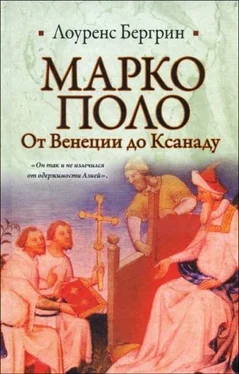


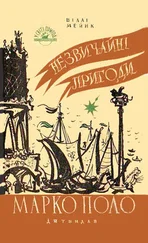
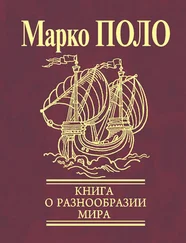
![Анатолий Фоменко - Книга 2. Расцвет царства[Империя. Где на самом деле путешествовал Марко Поло. Кто такие итальянские этруски. Древний Египет. Скандинавия. Русь-Орда на старинных картах]](/books/156934/anatolij-fomenko-kniga-2-rascvet-carstva-imperiya-gde-na-samom-dele-puteshestvoval-marko-thumb.webp)
